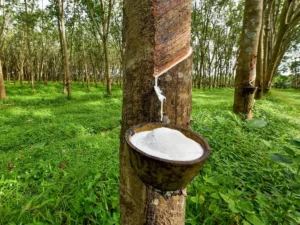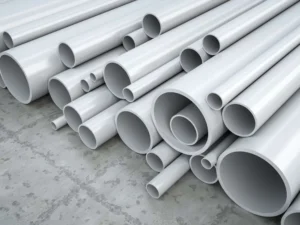Marine fenders are a crucial component of the shipment industry. Whenever you need to berth a ship or keep it safe during a collision, they turn out to be the game changers. But have you ever wondered what materials they have? For instance, you have a Yokohama fender. What material does it contain? Is it only rubber, air, or something else? If you are curious to know, perfect! You are at the right blog where we will explore marine rubber fenders and determine multiple fender materials.
Different Ship Fenders materials you should know
Ship fenders don’t have a single type or material variety. Instead, multiple options help you keep diverse options and make an ideal choice of marine rubber fenders for boats.
Here are different materials you must know!
Coir

Do you already know the coir fibers? These are some of the most aesthetic and robust fenders made from coconut material. A good quality coir fender has 100% pure coir fibers.
The main supportive features are:
- Durability. The coconut material makes the fenders more durable and resistant to damage. Therefore, they last longer than other rubber fenders.
- Aesthetic Looks. It does not look like a bunch of typical foam-filled fenders. Natural material imparts an aesthetic look that blends with the sea view.
- Resistant material. Coir is less prone to damage by saltwater because of its excellent resistance features. So you’ll get peace of mind when installing them.
Coir material is often suitable for smaller ships or private ships going for a short journey.
EPDM rubber
EPDM refers to the combination of different compounds. Ethylene, propylene, and diene monomers combine to make this rubber type very popular in the marine industry—all thanks to excellent features that make it a top choice.
These include:
- Resistant to UV damage. EPDM is a super excellent material that offers resistance to UV light. In marine conditions, you have exposure to UV lights most often. So, it keeps the ships protected.
- Long-lasting nature. You don’t have to worry for many years as it is a one-time investment for extended periods. Weathering resistance lets it work efficiently.
- Wide temperature Range. No matter if it is summer or winter, EPDM fenders are pretty compelling. You can use them in harsh weather conditions, often in the sea.
There is one prevalent drawback of this material. It is not very effective with hydrocarbons such as oil or gasoline. Such materials can cause damage to it and decrease its lifespan and performance.
Natural rubber

Natural rubber has been used for decades in the marine industry. Do you know why? Because excellent features help in the collision and absorb the energy.
A Yokohama fender comprises natural rubber reinforced with other materials. Some key benefits of using such a material include:
- High tensile strength. Rubber has a high tensile strength compared to the foam-filled fenders. That is why it is ideal for collision energy absorption in ships.
- Resistant to deformation. High elastic features and tensile strength combine to act against the collision. Once the shearing pressures are removed, it returns to its standard shape, unlike other materials.
- Inexpensive. Natural rubber is affordable because it does not involve complex manufacturing processes. So, a pneumatic rubber fender is cheaper compared to a foam-filled fender.
Natural rubber has applications in various fenders, such as a Yokohama fender.
Neoprene
Neoprene is another rubber product, but this time, it is not natural but a synthetic rubber. Due to its excellent designs and resistance, it is a perfect choice for marine fenders.
If we look at key features, these can be:
- Compatibility. Neoprene is easy to install and works with various surfaces. So, you are out of worry whether it is compatible with your boat.
- High energy absorption. The best thing is the high energy absorption. That is why it is famous for its use in the rubber fender for boats. You are safe during collisions.
- Wide range of temperature. Compatibility with different temperature ranges is a next-level feature. Therefore, you can harness it in the harsh environments in the ocean.
It is gray or black, making it look more stylish and mixes with your ship designs.
Polyurethane
Polyurethane has gained immense popularity recently due to its excellent material quality and energy absorption. Moreover, it is a highly durable material, allowing use for many years without losing its performance faster.
Here is a quick overview of all the features of polyurethane.
- Lower friction. It does not produce high friction. You can prevent scratches or other incidents in the situation of an accident.
- Excellent durability. Such fenders mainly make foam fenders. Due to resistance to damage, it works for many years without getting shattered.
- High density. High density allows quick energy absorption. That makes ship-to-ship transfer easier and faster.
Polyurethane is an ideal choice if you own a fast-moving boat and ship products from one location to another.
PVC

PVC is a synthetic polymer comprising polyvinyl and chloride in the polymer form. It is another plastic form that has applications in pipes and fenders. Because of better sustainability, it is a big deal for the eco-lovers.
Here are some features you should know.
- 100% recycled. If you are looking for eco-friendly solutions, PVC is the right option. It is 100% recycled material with no impact on the environment.
- Toxin-free. PVC material offers resistance to UV lights and keeps your fenders safe. Plus, it is phthalate-free. That means there will be no toxic impact on your health, too.
- Non-marking. Considerable energy absorption with non-marking features ensures scratch-free ships. Sufficient protection is offered by PVC material.
Nowadays, PVC material is used diversely in the marine industry for its quality features.
Silicone
Silicone is an advantageous material for making soft and realistic materials. It is feasible due to its soft and compressing nature that acts as the absorber.
Silicone has the following advantages in the marine industry.
- Stable material. Silicone is a very stable material and remains the same before and after collision. That is why it is durable.
- High-temperature range. From –55 to +300 degrees Celsius, silicone is there to help you. Temperature fluctuations are not a big deal in the ocean with silicone material.
- Cheaper option. Silicone is a cheaper material with high-class features. Cost-effective and long-lasting use puts it among the top materials for fenders.
TPE
Another competitor of silicone is TPE. It is in the same list of power features that silicone offers. TPE is highly resistant to damage and offers a long life.
Here are some features of the TPE material.
- Durable. TPE is an easy-to-main material with a long-lasting nature. You can use it for extended periods.
- High tensile strength. It has a tensile strength of 7.8 megapascals. It stands as strong as steel in terms of tensile strength.
- Non-marking properties. Compared to standard rubber, it has non-marking features. Ships remain safe from scratches and damages.
TPE helps the vessels preserve their original shapes and keep them safe during berthing processes.
What should you look for in Yokohama Fender Materials?
Choosing the Yokohama Fender material is vital for your ships and boats. Sometimes, it is tricky, too. But that’s no problem. We have listed some top features to determine the flawless material.
Material Strength
Since you aim to provide the best safety during the collision, a material with no strength will easily get crushed. It will be a massive loss of Fender materials and your ships.
To prevent it, you must look for a high-strength material. That absorbs the energy and keeps itself safe during the event of collision.
Durability
Do you want a long-lasting Yokohama fender? A durable material like rubber can be a tremendous chance to grab and use it for extended periods. Plus, it will also be cost-saving because you don’t have to repurchase the fender or invest in maintenance.
Flexibility
Sea conditions are very unpredictable. Storms, hail, and water waves produce considerable fluctuations in the temperature. It leads to serious compatibility issues if you don’t have a material that works at every temperature.
Therefore, look for a flexible material that offers broad-temperature working conditions. Moreover, it does not compromise its optimal performance.
Overall cost
Everyone wants a cheaper and more affordable solution for their fenders. At this point, the first considerations are about the material. Cheaper material means the overall cost of the fender will be less.
So, look for a Yokohama fender material that is cheaper yet qualitative and efficient. In other words, buy a Fender with cost-efficient material.
Endnote
Whatever material you choose, ensure it is 100% original and procure quality. Always look for quality content and longevity.
Do you need a top pneumatic rubber fender manufacturer?
Look no further than JerryBorg Marine — a reliable Yokohama rubber fender manufacturer. Years of experience have made us a top choice. You get only quality rubber fenders that remain a long-lasting partner.
